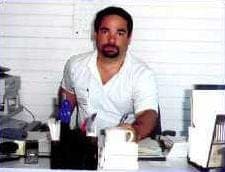world gathers for metal finishing
Q&As since 1989
-----
Cyanide Wastewater treatment problems (batch system)
2000
For years we have treated cyanide bearing waste waters by alkaline chlorination. We collect the rinse waters into a holding tank and treat 6000 gallons at a time. We add ferrous sulphate ferrous sulphate [affil links] to remove the copper prior to discharge to the POTW. With the Title V requirements, we changed from chlorine gas to aqueous bleach. Now we are having problems treating the batches. Jar tests work in 4 hours, however treating the batch generally requires 7-10 days to treat the batch.
Has anyone else had problems with different reaction rates between jar tests and batch treatment?
Has anyone encountered a difference in the reaction between chlorine gas versus 13% bleach?
Tim S [last name deleted for privacy by Editor] Crawfordsville, IndianaIt's hard to say, without having a sample to look at, or more information. But I would guess the cause of your problem is pH.
Chlorine gas is acidic, hypochlorite is alkaline. You may have relied upon chlorine to do the pH adjustment that is frequently required before treating cyanide waste. Optimum pH for alkaline chlorination is 10.5 - 11 and cyanide wastes are frequently higher than that in pH.
You might try lowering the pH with sodium bicarbonate, if this is indeed your problem.

Dave Wichern
Consultant - The Bronx, New York
2000
We batch treat our CN with alkaline chlorination also. We have to watch our bleach as it can lose some of the chlorine over time. We also use the two stage process so we get complete destruction. It's very pH and ORP sensitive but very effective. You have to be careful not to try and treat solutions with too high CN or metals or it will be difficult. With a tank your size you'll need good agitation throughout the treatment process or the chemicals won't mix properly. Also...if you add the Sulfuric acid too fast during the second stage you may get some ammonia formation....which will tie up some of the metals.

Jim Conner
Anoplex Software
Mabank, Texas USA

2000
Jim,I have two questions for you:
1.What values would you recommend for ORP?
2. When you say " not too high concentrations for cyanide and metals" what values do you mean here?

Sara Michaeli
Tel-Aviv-Yafo, Israel
2000
In response to alkaline chlorination, I have found out that maintaining 40-60 ppm of free chlorine at a pH of 10.5-11 for a minimum of 40 minutes is sufficient for my operation. Lower pH to 6 and maintain 20-30 ppm of free chlorine for 20-30 minutes. My next step is to drop pH to 3-4, checking for total chlorine and hexavalent chrome. I then add sulfur dioxide to destroy chlorine and reduce hexavalent chromium to trivalent. You may also use sodium metabisulphate instead of SO2. I then add 600 pounds of hydrated lime [affil links] {I'm treating 150,000 gallons}, bringing the pH up to 7-9. I then adjust pH to 11.8. This pH is optimal for me. I'm trying to precipitate Cd, Ag, Cr, Ni, Cu, and Zn. I then add 1 pound of flocculent and turn the agitation off. By following this procedure, I can maintain <.04 ppm for my metals and <.08 ppm for free cyanide.
Michael shoup- jenkintown pa USA
2001
2005
I'd want to comment that we treat our solution (with 20 - 30 ppm free cyanide) with gas chlorine also. We keep 1.5 - 2 ppm of free chlorine during chlorination stage at pH 10.3-10.5, and 10 - 15 min of retention time.
We use NaSH to precipitate metals, ferric chloride [on
eBay or
Amazon] as coagulant and anionic flocculent for clarification.
We can maintain <0.05 ppm WAD cyanide on discharge with this process.
- Lima, Peru
What is approximate cost of all chemicals you use for the treatment of a 150,000 gal batch?
Marija Jurcevic- Reno, Nevada, USA
2006
Please put your question in context, Marija. I'm not clear what your question is or who you were directing it too. Thanks!

Ted Mooney, P.E.
Striving to live Aloha
finishing.com - Pine Beach, New Jersey
2006
Q, A, or Comment on THIS thread -or- Start a NEW Thread
